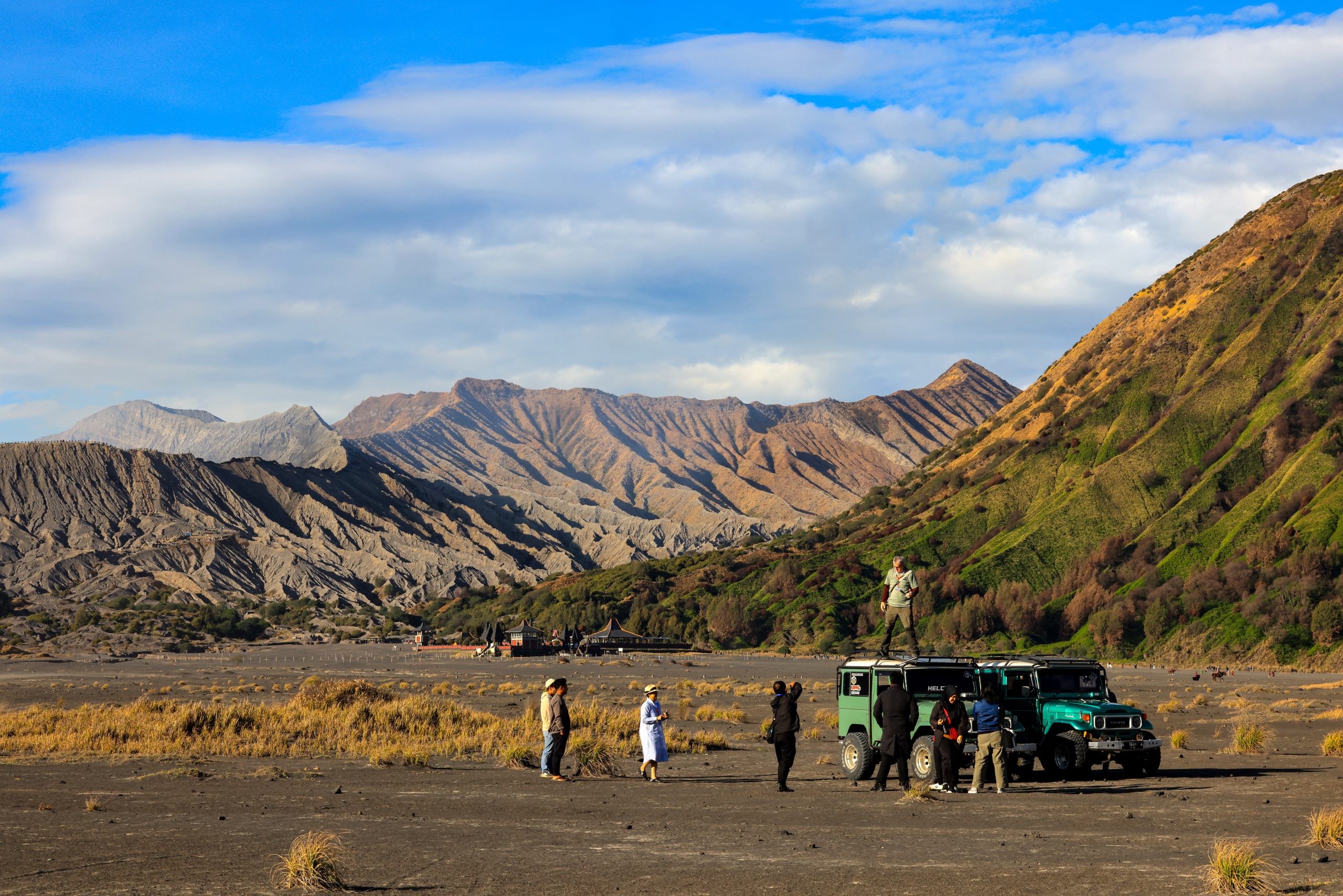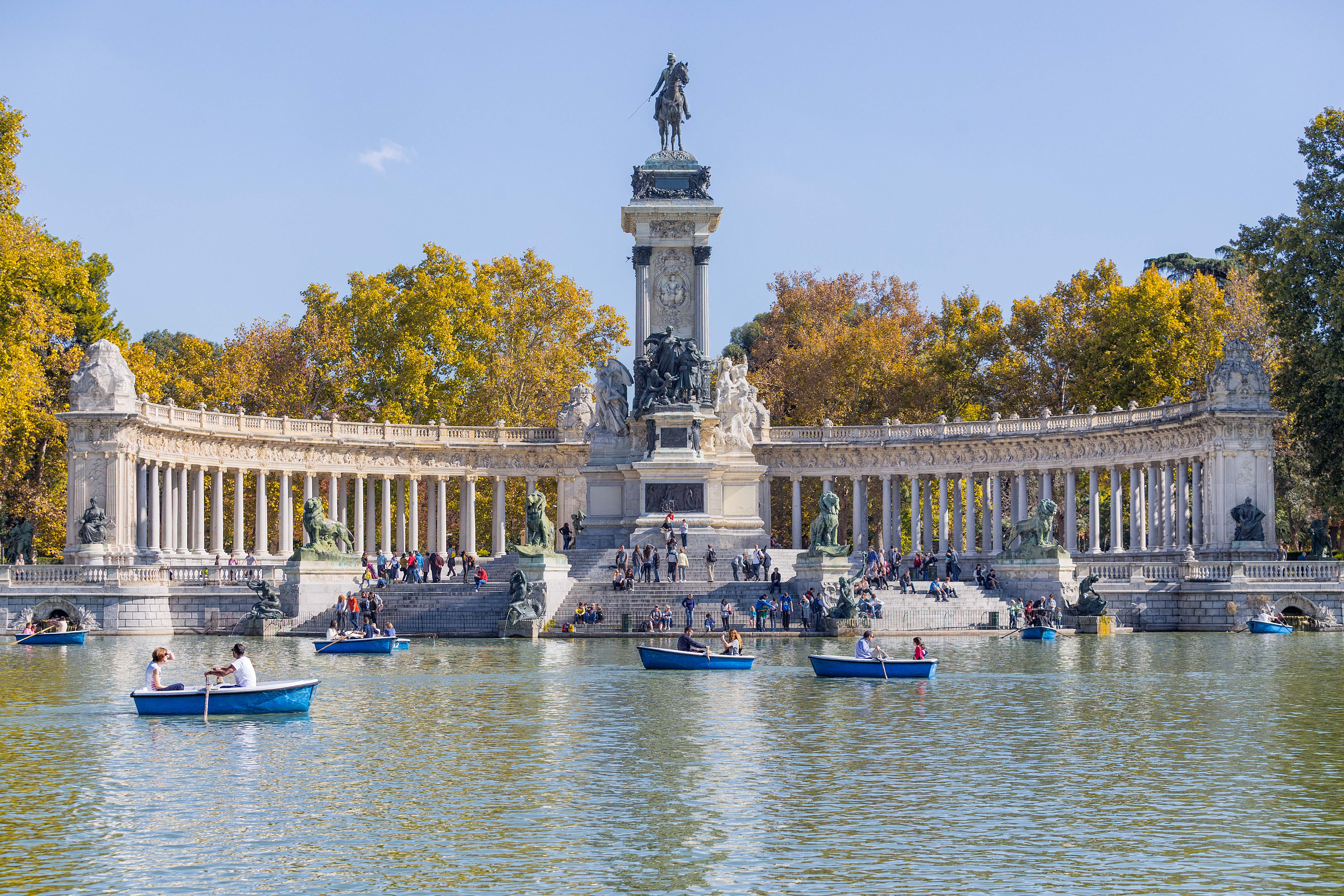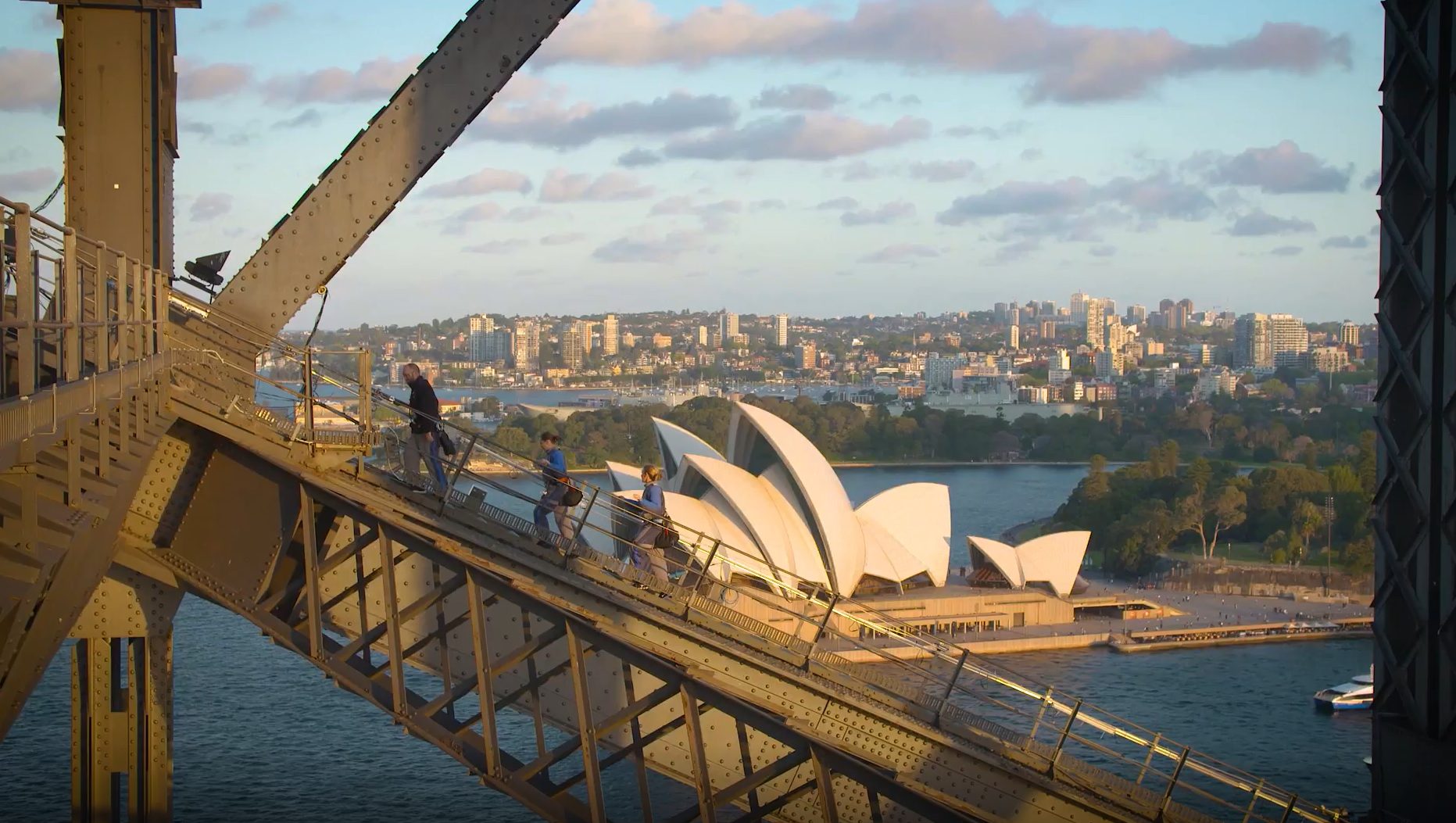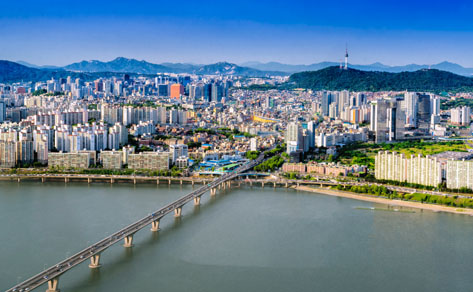
Seoul’s activities and attractions represent a well of opportunity for delegates keen on exploring beyond the conference hall. With conference venues and meetings-focused hotels spread throughout the city, the South Korean capital’s extensive subway network ensures delegates can easily explore the sprawling metropolis and take in its diverse offerings, from food and heritage to pop culture and natural landscapes.
Divided by the Han River, Seoul has expanded in recent times from its old north-side cityscape to include a modern area south of the river. Several commercial, financial, retail and entertainment developments are now found here, while the bulk of the city’s history and heritage is found to the north.
“Many of our competitors are located in Seoul’s southern area, but location-wise it’s not the same,” says Bruce Lee, general manager and president of the Grand Ambassador Seoul hotel in Jangchung-dong, on the north side of the river. “We benefit a lot from our location, near to Namsan Park, Myeongdong, Dongdaemun and Itaewon. These are all areas many foreigners are keen to see.”
Palatial grandeur
The most notable attractions that the 24-hour Discover Seoul Pass offers entry to are four of Seoul’s major palaces, all on the north side of the river. While Gyeongbokgung – the largest – is arguably the most popular, Changdeokgung and the directly connected Changgyeonggung Palace in Jongno district are also impressive.
Built in 1405, Changdeokgung was named a Unesco World Heritage site in 1997. Beyond the palace buildings are Huwon Secret Garden and its ponds and streams. Changgyeonggung is a smaller palace built in 1483 as a residence for wives and concubines. Here, groups can also wander freely through its buildings, courtyards and gardens with waterways and bridges.
To the southeast is Dongdaemun Gate. One of the eight gates of the old Seoul City Wall (parts of which still remain and can be hiked along), Dongdaemun now sits in the midst of one of the city’s top shopping and entertainment districts. Close by is Cheonggyecheon Stream, which bisects the old city centre, where 24-hour malls sell all manner of goods and Dongdaemun Design Plaza showcases exhibitions, forums and fashion shows.
Still on the north side of the river is Myeongdong, one of Seoul’s most popular districts. This lively area is also a shopper’s paradise, with vast duty-free stores (including the main branch of Lotte Duty Free, which is connected to the Lotte Hotel Seoul), and cosmetic and fashion outlets.
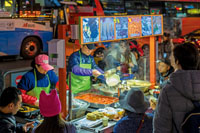 Myeongdong has another of Seoul’s greatest offerings – street food. Getting acquainted with the city’s culinary scene can be done through its numerous street food stalls, where delicacies span the spectrum from twisty potato sticks and spicy tteokbokki rice cakes to more upmarket fare such as grilled scallops and lobster with garlic butter. For a more formal affair, Myeongdong’s abundant Korean barbecue, noodle and fried chicken restaurants are definitely worth sampling.
Myeongdong has another of Seoul’s greatest offerings – street food. Getting acquainted with the city’s culinary scene can be done through its numerous street food stalls, where delicacies span the spectrum from twisty potato sticks and spicy tteokbokki rice cakes to more upmarket fare such as grilled scallops and lobster with garlic butter. For a more formal affair, Myeongdong’s abundant Korean barbecue, noodle and fried chicken restaurants are definitely worth sampling.
Out towards the west of the city is Hongdae, another busy street-market district with a younger focus owing to its proximity to Hongik University. Street performances are common here, with plenty of acts busking to sizeable crowds. Cafés, galleries, clubs and the artists’ Free Market can be found here, while Hongdae Mural Street (also known as Picasso’s Street) is a prime spot to see both graffiti and other artworks. Hongdae is also home to the Trickeye and Ice Museum.
To the east, Namsan Park on the cusp of Yongsan district is home to both Namsan Mountain and the N Seoul Tower. A popular hiking area in the middle of the city, Namsan Park offers great views, particularly from the 236-metre tower at the summit.
A short distance to the west of Namsan Park is one of the city’s newest developments, Seoul Station 7017 Project, also known as “Seoullo 7017”. At its core is the rejuvenation of an almost 1km-long elevated road to create what has been described as Seoul’s answer to the High Line in New York.
Seoul Metropolitan Government plans to convert the road into a pedestrian “hanging garden” walkway. The aim is to connect the underdeveloped area around Seoul station to the city centre by turning it into a “centre of urban tourism and conventions” with space for cultural programmes.
Southside
While many of Seoul’s historic sites are concentrated north of the river, the more modern south is far from devoid of unique offerings. There’s the Noryangjin Fisheries Wholesale Market in Dongjak district, just across from Yeouido (home to the International Finance Centre Seoul, the IFC Mall and the Conrad Seoul hotel). First opened in 1927 north of the river, Noryangjin market was relocated in 1971 and is one of the country’s largest seafood markets. Things get going very early, typically around 1am, and there are several intriguing sights, including a live fish auction at about 3am.
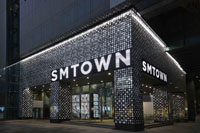
“For smaller groups, we’ve organised boat cruises on the Han and tours of the historical sites, but what’s really popular is the fish market,” says Conrad general manager Mark Meaney. “We bring people down during the day for a tour and guests can select their fish. They can have it cooked there, but we often bring it back to the hotel and have it as part of the meal.”
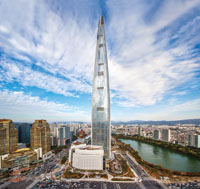 Gangnam is also home to the SMTown at the Coex Artium, part of the Coex Centre, which includes a convention and exhibition centre as well as a shopping mall. Delegates can tour studios and video and photo sets used by K-pop stars. Classes led by choreographers and voice coaches are also a big hit with MICE groups, with experiences including dressing up in K-pop outfits at K-Live, a K-pop hologram performance hall.
Gangnam is also home to the SMTown at the Coex Artium, part of the Coex Centre, which includes a convention and exhibition centre as well as a shopping mall. Delegates can tour studios and video and photo sets used by K-pop stars. Classes led by choreographers and voice coaches are also a big hit with MICE groups, with experiences including dressing up in K-pop outfits at K-Live, a K-pop hologram performance hall.
East of the Coex Centre is the new Lotte World Tower (right), which opened in April. Standing at 555 metres and covering 123 floors (it’s ranked as the fifth-tallest in the world), its skywalk and observation deck provide some of the most expansive views available anywhere in the city.
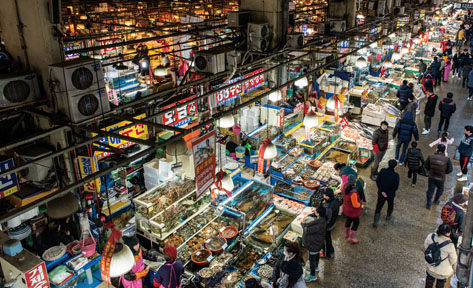
SEOUL TEAMBUILDING TIPS
Ancient and Modern Seoul City Race – Finding the King Sejon state in Gwanghwamun Square, then head for Dongdaemun Design Plaza and ask one of the many youthful and trendy bypassers to mime a K-pop star with the team. The activity gives participants the chance to sample Seoul’s public transport, Korean street food, shops and more.
Fish Market Adventure – This experience takes groups into the heart of the market at Noryangjin, giving a chance for teams to bargain with vendors to get the best price on seafood. Competing groups can later sit down together to enjoy a fresh seafood dinner. It can be arranged through koreamice.net.
Kimchi World – Cookery forms the basis for many enjoyable team-bonding activities and Korea is no exception. Hansik is the name given to Korean cuisine, distinctive for its use of in-season vegetables, sauces, marinades and fermented side dishes. At Kimchi World teams get the chance to learn about hansik and create their own recipes that get judged – in a good humoured way – by the masters.
Escape Room Experience – A more eerie way of testing how groups can work calmly with each other is to take them to the Seoul Escape Room. The company has Escape Room locations in the lively neighbourhoods such as Itaewon, Hongdae and Gangnam. Groups enter a room packed with clues and riddles that have to be solved within an hour. Be warned, themes range from murder mysteries and “Jazz Bar of Death”, to zombies and “Escape from CIA Headquarters”. (seoul-escape.com).
Traditional music and beats – Drumming sessions have become a popular way of enlivening a meeting or bonding groups. Korean percussion is slightly more intricate, but the basics of samulnori can be learned within a couple of hours. Participants at the workshops at KOUS, in Korea House, Samcheonggak, are assigned to small groups to learn the basics on different instruments before all coming together for a lively, pulsating ensemble.

24-HOUR SEOUL PASS
Seoul Tourism Organisation, together with Seoul Metropolitan Government, have launched the
24-hour Discover Seoul Pass to provide access to 16 of the city’s most popular sites. While many delegates may already receive a Seoul MICE card, which works as a partially prepaid travel card, the Discover Seoul Pass offers a more downtime-focused function.
At a cost of 39,900 won (about US$35), the pass has its own app and acts both as a travel card and entry ticket for tourist sites. A new 48-hour version was launched in May, costing 55,000 won and giving access to more than 20 attractions, plus discounts and coupons for 13 shops and venues.
ON THE GROUND
Seoul Convention Bureau
http://miceseoul.com
Korea, Beyond Meetings
http://koreaconvention.org
Aju Incentive Tours
http://ajutours.co.kr
Cosmojin Tour & Consulting
http://cosmojin.com
Kim’s Travel – DMC Kore
http://kimstravel.com
